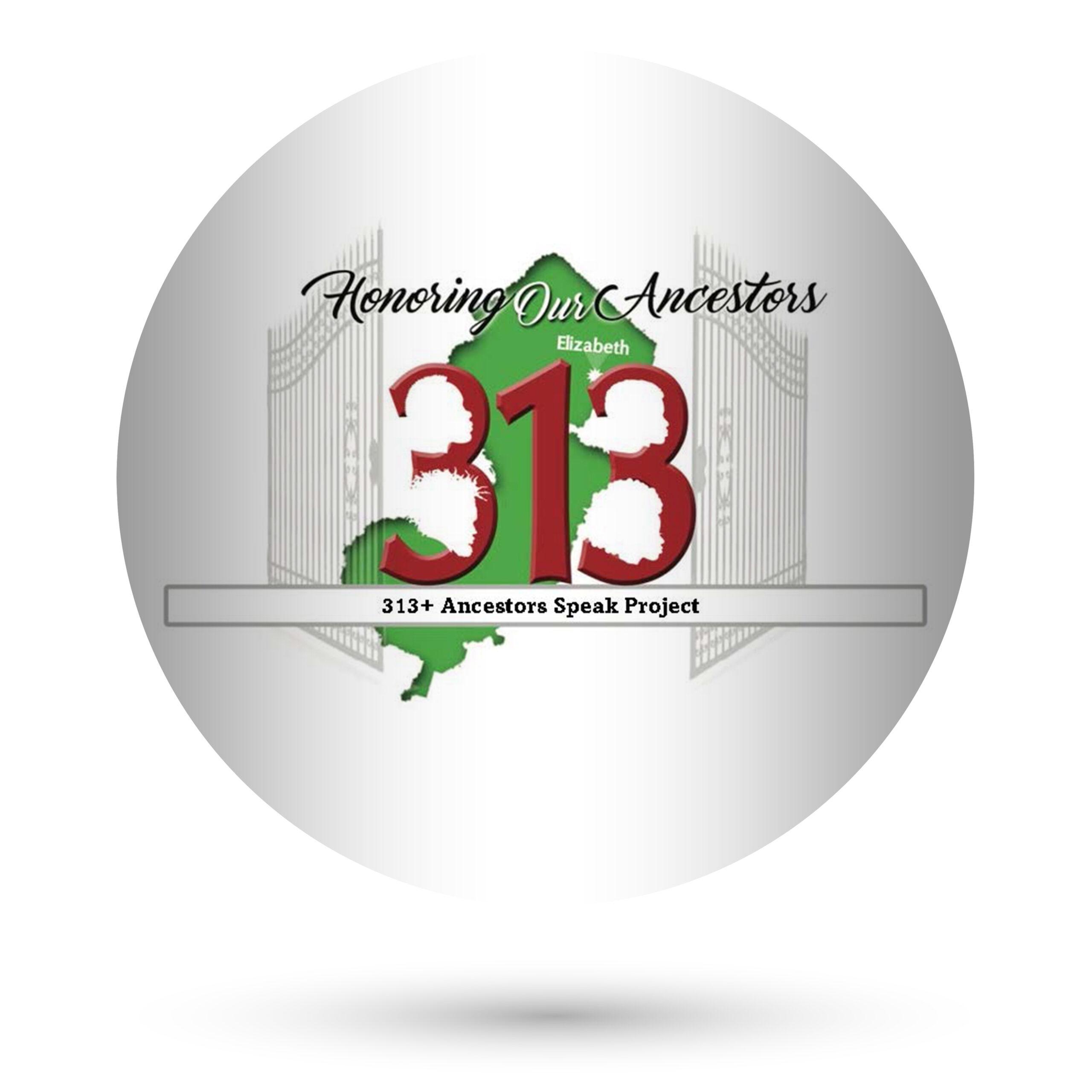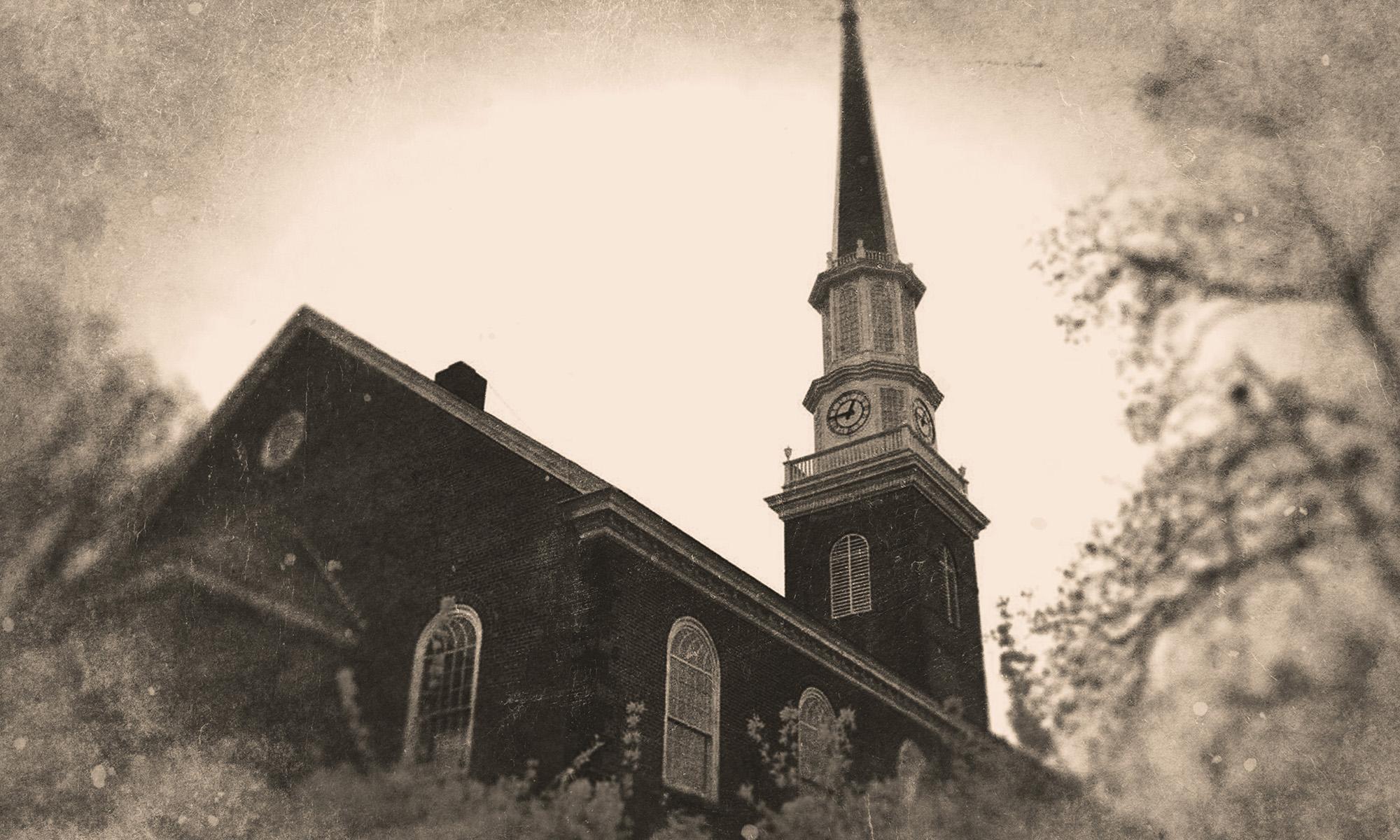
A merged congregation bonds over a project to honor the freed and enslaved Africans buried in its cemetery
A historic, predominantly Black congregation in New Jersey seeks to learn the names and stories of more than 300 unidentified souls buried in unmarked graves.
In December 2019, when the Rev. Dr. Wanda Lundy was settling in as the new pastor of Siloam Hope First Presbyterian Church in Elizabeth, New Jersey, she made a discovery that changed her ministry.
Then a newcomer to the community, Lundy was participating in Elizabeth’s Four Centuries in a Weekend — an annual tour that celebrates the historic city. As the oldest English-speaking church in New Jersey, Siloam Hope First Presbyterian is a regular stop for this annual event.
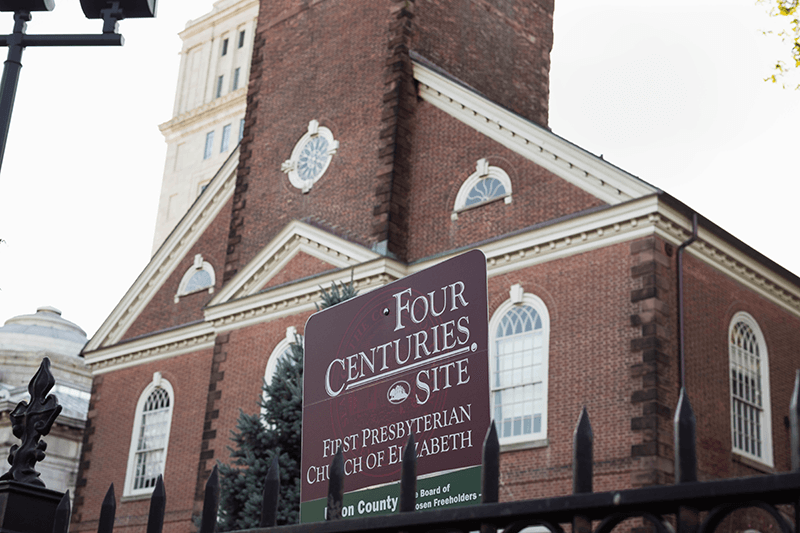
Siloam-Hope First Presbyterian Church of Elizabeth
The history of the white congregants of the church is well known, but hundreds of stories remain untold.
It was that day, Lundy says, that she was first introduced to the ancestors.
One of the volunteers on duty gestured toward the church’s cemetery, which dates to the late 17th century, and mentioned that there were 313 freed and enslaved Africans buried within its borders in unmarked graves.
Lundy had known that the church was steeped in history. Dating back to 1664, First Presbyterian (as it was known for centuries), with its Old First Cemetery, is the final resting place for soldiers of the Revolutionary War and other American patriots.
And the academy built on its premises educated founding fathers, among them Alexander Hamilton and Aaron Burr.
Yet the story of the freed and enslaved Africans who worshipped in the church’s balcony — and now lie in unmarked graves — is virtually untold.
“It was the way she said it, so nonchalantly,” Lundy said. “There’s a great deal written about the history of the European church members, but here you have people whose stories have not been told.
“From that point on, I said, ‘That’s why I’m here.’ I believe the ancestors called me here because they want to be remembered.”
The discovery inspired Lundy to start the 313 Project — a mission to honor the freed and enslaved Africans who rest in the Old First Cemetery. The project is also helping members of her congregation, as well as the broader Black community, build a stronger sense of identity.
“Community is at the heart of the gospel. And the core to community is identity,” Lundy said. “For people of color, one’s story has not always been affirmed and told in the larger community.”
The 313 Project: Looking back to claim the future
Before coming to Siloam Hope First Presbyterian, Lundy had not served as a pastor in decades. An accomplished educator, Lundy is an assistant professor at New York Theological Seminary, where she teaches world Christianity and directs the mentoring program. But she felt the need to get back in the pulpit.
“Any person in theological education will affirm that the church has changed, which means that theological education must change to address that,” Lundy said. “For me [returning to the pulpit] was bringing theory and practice back together in the 21st century.”
Lundy also had another reason for stepping back into the pulpit: to help unite three merging congregations. A year before her arrival, First Presbyterian Church had merged with two previously merged Presbyterian congregations — Siloam and Hope Memorial.
Siloam Presbyterian, which had always been a Black congregation, traced its origins to First Presbyterian. The older church, which originally relegated Black congregants to its balcony, had built Siloam a few blocks away in the mid-19th century as a segregated church for African Americans. Now, over 170 years later, the Siloam congregation had come back to the church that founded it.
While two of the three congregations were either white or integrated, the current congregation — which has about 60 members — is predominantly Black.
The 313 Project and its push to honor the hundreds of forgotten souls in the Old First Cemetery has helped unify the three distinct congregations.
Its current goal is to build a monument to the dead — one that symbolizes where they came from, what they contributed to this country, and how their very survival paved the way for future African Americans. Ultimately, Lundy hopes to learn the names of all the deceased and create a database that may help identify their living descendants.
“I see it as a full circle, coming back to the original church,” said Wanda Sizemore-McRae, the congregation’s clerk of session and a member of Siloam Presbyterian before the congregations merged. Sizemore-McRae said the existence of the graves was common knowledge but she had been surprised at how many there are.
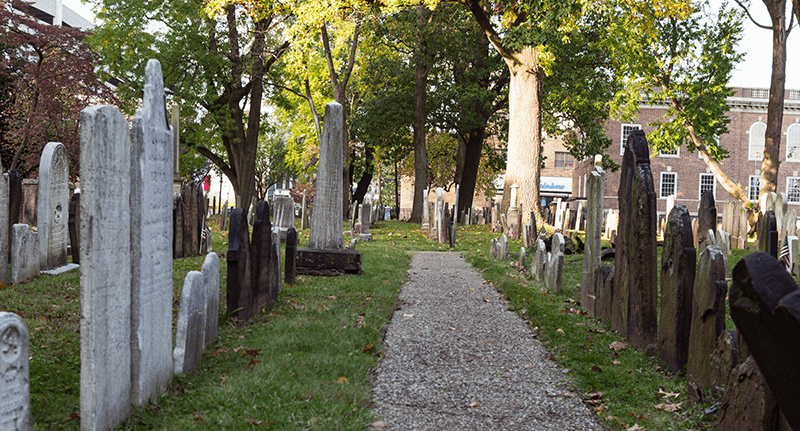
Old First Cemetery of Elizabeth
Three congregations now are combined in what originally was First Presbyterian.
“A lot of merged churches have a hard time coming together,” she said, “but the 313 Project has been a bonding experience. For all of us.”
Congregant Bessie Allen, who grew up attending Hope Memorial, said she also wants to honor the 313.
“We want the monument to be a daily reminder that during the Revolutionary War — during the time this church was built — we were here. We were part of it. We want people to know about that history,” she said.
As for the planned monument, Allen said, “God is going to make a way for all this to happen. They [the ancestors] have waited long enough.”
The past informs the future
For Lundy, this project is not only about telling the stories of those who have been silenced for so long; it’s also about building relationships among the living and moving the conversation forward.
“It’s one thing to recognize our past as history. But it’s another to understand that history is not just our past but our future,” said Lundy, invoking the symbolism of the Sankofa bird that will stand atop the monument.
Translated from the Twi language of Ghana, “Sankofa” means “go back and get it.” The symbolic representation shows the bird’s feet facing forward and its head turned back.
“You can’t understand your present until you understand your history,” Lundy said.
Lundy recognizes that her church may be in a unique situation. While some predominantly white congregations have begun reckoning with their racist past, in this congregation the story is more complicated. Indeed, some of the souls in the graves may turn out to be the direct ancestors of people in the pews.
“This church was a beacon of white supremacy. The founders never would have imagined us where we are today,” said Linda Caldwell Epps, a historian, consultant and retired president of the New Jersey Historical Society.
“I’m glad to see that some institutions are trying to come to terms with what has happened in the past instead of just continuing to ignore it,” she said, citing as examples ongoing research projects at Princeton and Rutgers that are examining the universities’ connection to slavery. “The great force of history is that we carry it within us.”
Epps is among the wide range of partners Lundy has convened to help bring to light this unwritten history. Included among them are faculty from local universities, members of the Afro-American Historical and Genealogical Society, a history teacher from South Carolina, Lundy’s theological students — even the local police chief. The list keeps growing.
‘How much did their lives matter?’
Even though she grew up in Elizabeth, Epps was surprised by the news of the unmarked graves.
She first learned of them in 2012, when First Presbyterian’s previous minister asked her to conduct some preliminary research. Looking through church and historical records, the historian discovered other surprises as well — such as the extent to which slavery played a role in Elizabeth.
“That there were slave traders who lived in the city is something that was new to me,” Epps said. “Through working with this 313 Project, we are discovering what 17th, 18th and 19th century was like in the city [for people of African descent].”
Cherekana Feliciano, who has done extensive research about African American cemeteries in New Jersey, underscores the importance of initiatives like the 313.
“I think people don’t typically connect New Jersey with slavery,” said Feliciano, the vice president of the New Jersey Chapter of the Afro-American Historical and Genealogical Society. “These kinds of projects talk to that.”
Epps said she thinks the 313 Project fits in with the current anti-racism movements, including Black Lives Matter.
“How much did their lives matter for those who they were working for? Obviously, they didn’t matter so much that these people weren’t put into mass graves,” she said. “It’s time for us to wake up. This country would not be what it is today had it not been for the enslavement of Africans.”
An unexpected source of support
Lundy now has a spreadsheet of more than 150 people with whom she’s built relationships to help bring the 313 memorial to fruition. She likes to say it’s not her building these relationships but the ancestors guiding her. The ancestors, it seems, have also led her to some unexpected champions, including the local police chief.
Since Chief Giacomo Sacca, a lifelong native of Elizabeth, first learned of the mass graves during a routine visit to the church in February 2020, he has become one of the 313’s greatest champions.
“I had a walking post in front of that cemetery as a patrolman. I’d never known there was an unmarked mass grave there. When the reverend told me, it hit me like a ton of bricks,” he said. “This is a wrong that we can correct. We can pay them the respect they deserve as human beings, and as national historic figures.”
Since then, Sacca has helped find a local artist to design the memorial with inputs from the community, put out bids to monument companies to collect estimates, and presented the project to the Elizabeth Policemen’s Benevolent Association, which donated $3,000 from its fall fundraiser toward the monument.
Sacca has also proposed additional fundraising opportunities, such as the sale of inscribed brick pavers for a pathway through the cemetery, to be built with volunteer labor from the police force. The brick paver fundraiser went live in November.
All of this, of course, has been happening against the backdrop of the pandemic, which forced the church to close its doors and conduct services online, and the firestorm of racial injustice that has triggered protests against police killings of African Americans.
In May, the Sunday after George Floyd was murdered by police in Minneapolis, Lundy invited Sacca to address the church. During the Zoom meeting, a woman whose grown son has autism said she feared for her son’s life. A nonverbal Black male in his 20s, he walks around town with a hoodie on. And his go-to move when he gets nervous? He shoves his hands in his pockets.
Sacca worked with her and other parents to develop the Safe Interaction Program, which was launched this fall. Besides direct training for individuals with special needs — and educational resources for their caregivers — the program offers personalized identification cards, available on the police website, to help facilitate safe encounters with first responders.
“The idea is, when a cop makes a vehicle or pedestrian stop, before they have to say anything to the individual, the cop knows what they’re dealing with,” Sacca said.
Sacca is quick to point out that they never would have developed the program had it not been for the Zoom meeting to which Lundy invited him.
Lundy, again, deflects the credit: “The ancestors are trying to teach us. They are trying to help us.” That is why she is so committed to telling their stories. “As long as I have breath,” she said, “their names are going to be called.”
At the moment, Lundy has 117 names, to be precise, of the 313. At a recent online All Saints’ Day service honoring the dead, members of the congregation read those names aloud, from the youngest (Malvina Manning, age 3 months) to the oldest (Betsey Hoagland, 103).
“What matters is that we know that they are there,” Epps said during the service. She referenced Psalm 102: “The children of thy servants shall continue, and their seed shall be established before thee” (Psalm 102:28 KJV).
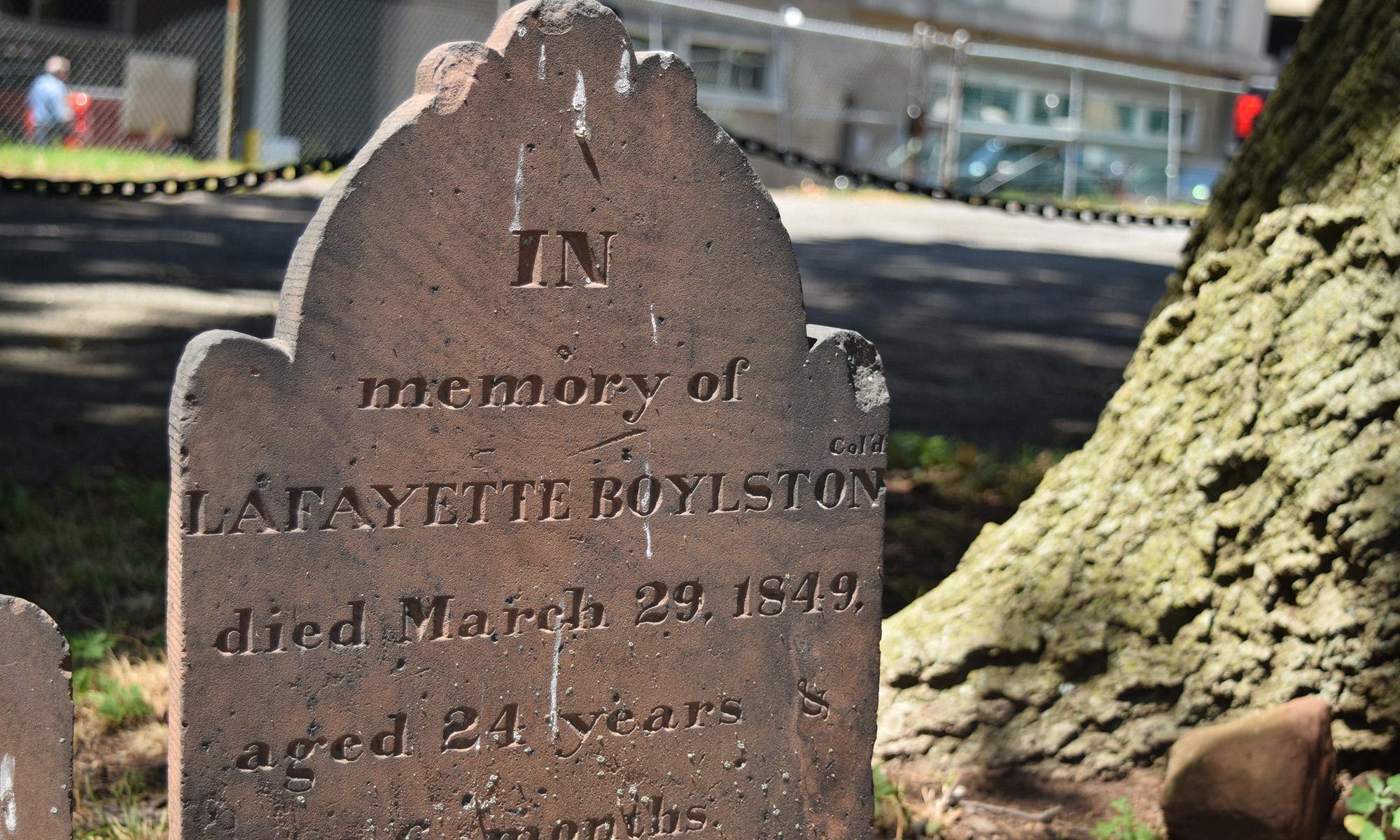
Lafayette Boylston Tombstone
Those buried in the cemetery's graves include some who are indentified by name and some who are not.
‘No one is forgotten’
There is one member of the congregation who may be able to add some names to the monument. Leonard Jackson, a native of Elizabeth, has a list of names he inherited from his mother, Margaret, who descended from the original Siloam Presbyterian members.
A few years before she passed away in 2014, Margaret Jackson entrusted the 13-page printout to her son.
“She told me, ‘I want you to keep this. On the list, you can see where I have marked where you have relatives in that cemetery,’” Jackson said. “But she never told me what to do with it.”
Scanning through the pages, Jackson read off the names of his known ancestors. “Post. That was my mother’s second cousin. Here’s another: William Best. [He] would have been [one of] my mother’s first cousins.”
Then Jackson got to the nameless entries. There are 316, and most of them do not have full names — or any names, for that matter. Among them: Baby boy, Child of Mr. Daniel, Black woman of Major Hartveld, Child of Miss Lawrence. Colored.
“The way they just threw them in this dirt — it’s just terrible,” Jackson said. “How can you put someone in the ground when you don’t have their first or last name?”
Will they ever know all the names? Or even the exact number? As information flows in from other sources, the estimated number of souls there grows closer to 370. And, according to Lundy, there may be more bodies buried under the church parking lot.
“Even though we can’t call each and every one of them by name or know just exactly how many they are, we know that they served, they defended, they loved,” Epps said. “By their labor, their love, their songs, they created for us a new world.
“We cannot possibly know all of their names,” she said. “But no one is forgotten in our tribute.”
Article originally posted here
